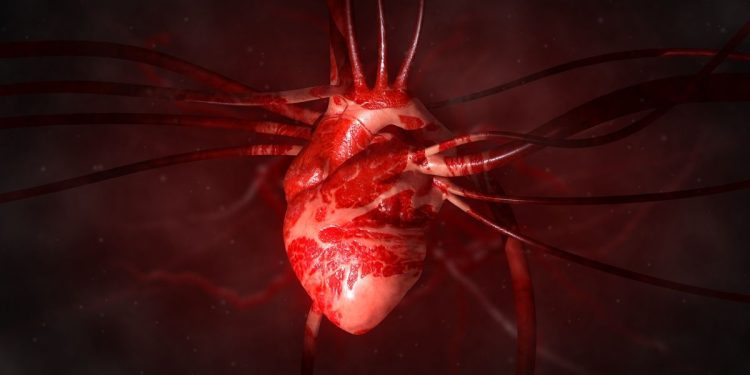A woman with a faulty heart was kept alive with the help of new “revolutionary” STEM cell technology, scientists report.
The 46 -year -old woman had experienced a heart attack In 2016 and then developed severe heart failure, in which the heart cannot pump enough blood to meet the needs of the body. The patient was waiting for a heart transplant when she underwent the experimental procedure for stem cells as part of a clinical trial.
During surgery, the woman’s heart was implanted with tiny cardiac muscle cell plates, which had been cultivated from stem cells in a laboratory. These 10 patches, each included around 400 million heart cells, maintained the stable woman until she could receive a heart transplant three months later, according to an article published Wednesday January 29 in the journal Nature.
“We now have, for the first time, a biological transplant cultivated in the available laboratory which has the potential to stabilize and strengthen heart muscle”, co-author of the study Dr Ingo KutschkaA heart surgeon at the University Medical Center Göttingen in Germany, said at a press conference, Nature News reported.
In relation: In a 1st, a cardiac malice was successfully treated with injected stem cells
Unlike many other types of cells, such as skin cells, cardiac muscle cells cannot easily push or repair themselves if they are damaged by an insult as a heart attack. Such damage to the heart can cause heart failure, which affects approximately 6.7 million adults aged 20 and older in the United States, According to the centers for disease control and prevention (CDC). Heart insufficiency has been listed as a main or main cause of death on more than 450,000 death certificates in the United States in 2022, the CDC reported.
More than half of people with severe heart failure die in a year unless they receive a heart transplant, but there are hearts of available limited donors, Nature News reported.
To complete these limited cardiac transplants, scientists have rather experienced the transplantation of cardiac muscle cells. In the New Nature article, researchers describe a method of growth of the heart tissue from stem cells called induced multiPotent stem cells (IPSC). Scientists create these stem cells by bringing together normal adult cells, then by reprogramming them in a “pluripotent” state, from which they can develop in almost all types of cells in the body.
Scientists encouraged these IPSCs to transform into cardiac muscle cells and laboratory connective tissue; The researchers then mixed the resulting fabric with collagen to create tiny plates that could be located on the surface of the heart.
“The transplant is fundamentally outside the heart,” Dr Jianyi ZhangAn IPSC bio-engineering expert at the University of Alabama in Birmingham who was not involved in this study, told nature. “It’s quite a breakthrough.”
Scientists first tested similar patches on rhesus macaque monkeys (Macaca MULATTA) with heart failure; The patches tested on monkeys have been grown with monkey stem cells. Six months later, several of the monkeys increased the thicker heart walls which could pump up to 10% more blood per heart rate than a group of unsolved monkeys.
During the patch procedure, the monkeys all received immunosuppressive drugs, to prevent their immune system from rejecting the transplants. In addition, none of the monkeys have developed irregular cardiac tumors or heartbeat, which had been a problem in similar studies in the past.
The success of the monkey trial allowed the trial in human volunteers, one of which was the 46 -year -old woman. After the woman underwent her cardiac transplantation, the researchers examined her old heart and saw that the implanted patches had cultivated tiny blood vessels, indicating that they received blood and oxygen from the body.
“It is clear now that you can add muscle to the faulty heart, and that we can do it without concern for security”, co-author of the study Wolfram-Hubertus ZimmermannA pharmacologist told the University Medical Center Göttingen, during the press conference.
The possible hope is that this approach will help people stay alive long enough to receive a donor heart; It is not intended for a complete alternative to transplants.
In a current trial, scientists have so far established fixes in 15 other people. They also experience more macaques to find a way to minimize the use of immunosuppressive drugs, which help prevent rejection but can leave a patient vulnerable to infection and other health problems.


